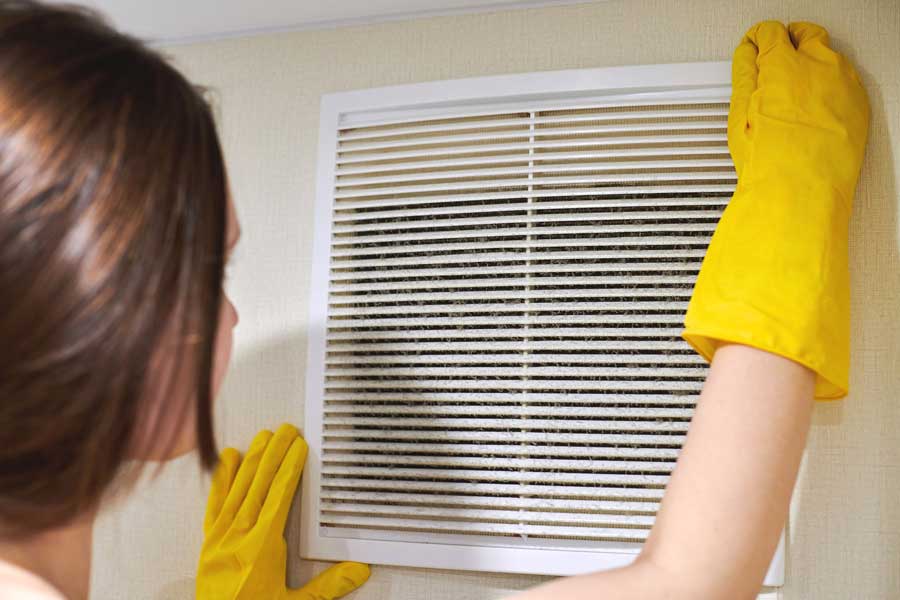With spring cleaning right around the corner, you may be thinking about the many projects you need to tackle. Your home, which has been closed up for a while, may seem a lot dustier than you’d like it to be.
In some cases, your HVAC may be partly to blame.
Here’s how to minimize dust created by your HVAC system.
Filter Check
Spring is the perfect time to inspect your HVAC system, and the first place to start is your filter.
Hopefully, you’ve been checked on your air filter at least once during the cooler months. If it’s been a while, it’s probably dirty and in need of a change.
HVAC filters are designed to capture dust, hair, and other air particles from the air to prevent re-distributing pollutants throughout your home.
If your filter is dirty or worse yet, clogged, you’ll certainly notice more dust. This is especially true for a home with pets since their hair and dander seems to head straight for the filter.
With pets or excessive dust, it’s a good idea to change your HVAC filter more often than the recommended every three months.
Another source of more dust comes from ill-fitting filters. If your filter isn’t the right size or if there are gaps around the sides of the filter, dust gets in around the filter and is more easily distributed in your home.
A professional HVAC inspection can make sure the seals are tight enough around the filter to prevent this issue.
Filter Selection
Along with changing filters more frequently, it may be time to change the type of filter. By choosing a filter with a higher MERV (Minimum Efficiency Reporting Value) rating, it will catch more of the smaller airborne pollutants to keep them out of circulation.
Although these higher-rated filters provide better air quality and last longer, they are more expensive and require a little more energy from your HVAC system to catch all of the smaller air particles.
Ductwork
A common cause of excessive dust is due to leaks or gaps in the ductwork.
Due to installation issues or simply over time, breaks in the ductwork cause dust and pollutants to release into the air and not even make it to the filter. The result is a noticeable increase in dust coming right out of the ductwork and into the air.
Check the Vents
While inspecting your HVAC system this spring, take a close look at your vents. If you notice that they’re dirty and especially dusty, you may have a leak somewhere in your ductwork. Leaky ducts circulate unclean air right back out through the vents and into your living spaces.
If you locate a gap or leak in your ductwork, you can try to repair the leak with duct tape.
However, if you aren’t able to locate any ductwork leaks but are still finding a lot of dust around the vents, contact an HVAC technician for a more thorough inspection.
California Climate
In humid climates, any dust in your home settles more quickly because it’s heavier with humidity. While this prevents more airborne dust, the heavier, more humid air tends to get trapped in the air filter more easily. So, the wetter and more humid the climate, the more you should change the air filter.
When the air is dry instead of humid, the dry air goes deeper into the HVAC system, which increases the odds of more airborne dust particles circulating through your home.
The key is to maintain humidity levels to prevent overly humid or bone-dry air conditions inside your home. If your air is too dry, a humidifier will help maintain adequate humidity levels.
Spring Dusting Tips
After or instead of sweeping bare floors, use a damp mop to trap dust instead of spreading it around the room or into vents.
After making sure you have a clean filter, adjust the fan setting on the thermostat to the “on” position while dusting. This allows a lot of airborne dust to pull through the vent and get trapped in the air filter. When done dusting, set your fan setting back to “auto.”
Conclusion
If you struggle with a dusty home, don’t rule out your HVAC system.
This spring, schedule a professional seasonal inspection and HVAC system cleaning with the expert technicians at Dale HCS in Santa Rosa.

